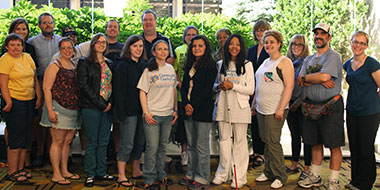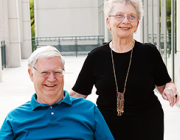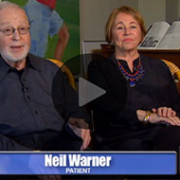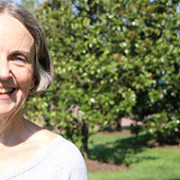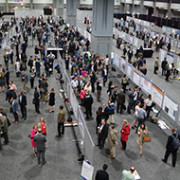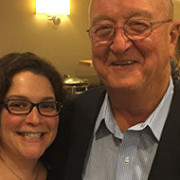Building Community: A case for adult hydrocephalus research
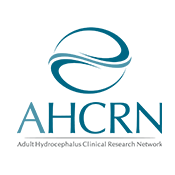 In early October, the Adult Hydrocephalus Clinical Research Network (ACHRN) officially launched after a meeting in Salt Lake City, UT. The AHCRN is modeled after the highly-successful, pediatric-focused Hydrocephalus Clinical Research Network (HCRN). Its initial focus is on a core data project that will collect patient demographics, hydrocephalus cause, diagnosis information, surgical and medical management information, images, and cerebrospinal fluid (CSF) samples for biobanking. This initial data will be used to understand the variability, progression, and current treatment practices for hydrocephalus in adults and inform the development of hypothesis-driven research. The creation of a CSF biobank and image database will help fast track research enabling basic, translational, and clinical research to move forward in parallel.
In early October, the Adult Hydrocephalus Clinical Research Network (ACHRN) officially launched after a meeting in Salt Lake City, UT. The AHCRN is modeled after the highly-successful, pediatric-focused Hydrocephalus Clinical Research Network (HCRN). Its initial focus is on a core data project that will collect patient demographics, hydrocephalus cause, diagnosis information, surgical and medical management information, images, and cerebrospinal fluid (CSF) samples for biobanking. This initial data will be used to understand the variability, progression, and current treatment practices for hydrocephalus in adults and inform the development of hypothesis-driven research. The creation of a CSF biobank and image database will help fast track research enabling basic, translational, and clinical research to move forward in parallel.
Serving our Adult Community
In total, adult hydrocephalus patients represent over half of the hydrocephalus community. The adult subset of our community is comprised of a number of key groupings. There are the adults who have lived with and been treated for hydrocephalus since they were infants and children. There are also those congenital hydrocephalus patients who went undiagnosed and untreated as children but developed symptoms and then were diagnosed as adults. Hydrocephalus can also develop in adults after injury or disease (subarachnoid hemorrhage, tumor, infection, etc.). In addition, there is a growing population of patients with idiopathic normal pressure hydrocephalus (iNPH). “Idiopathic” means that the cause of hydrocephalus is unknown. The prevalence of iNPH increases dramatically in populations over 80, one of the fastest growing populations in the United States due to the aging baby boomer population, but iNPH is often misdiagnosed and under treated.
Despite the numbers, there is limited knowledge surrounding adult hydrocephalus, and, from a clinical standpoint, the need for high quality demographic, diagnostic, and treatment data is clear. Neurologists and neurosurgeons who treat adults simply do not know who is at risk, what the best diagnostic measures are, what treatments are most effective, or how comorbidities will affect outcomes. The AHCRN will be able effectively to close these knowledge gaps by collaborating across centers and combining data at a central data coordinating center (DCC). The DCC, located at the University of Utah, is staffed with highly-trained data coordinators, managers, and biostatisticians who are able to ensure the quality of the AHCRN’s research and results.
Extending Beyond the Hydrocephalus Research Community
The benefits of adult hydrocephalus research go beyond the adult hydrocephalus community. In recent years, awareness and interest in hydrocephalus research has been increasing but is still well behind other diseases with similar prevalence, such as Parkinson’s disease. The hydrocephalus community needs to create a larger research base. We need scientists and clinicians who are currently focused on other diseases and conditions to think about how his or her research relates to hydrocephalus. We need more biomedical engineers designing new shunts and other devices. We need better diagnostics and monitoring.
To obtain these objectives, we need to broaden the hydrocephalus community. We need to remind the scientific community that hydrocephalus can affect anyone at any age and that hydrocephalus is a complicated condition, not just a plumbing problem. The formation of the AHCRN represents one step in this process by demystifying the adult hydrocephalus population and bringing new researchers into the fold.
Similar to the HCRN, the AHCRN will first produce clear demographic, diagnostic, and treatment data for adult patients providing a baseline and jumping off point for hypothesis-driven research studies. Well-coordinated networks attract collaborators and collaborations from medical institutions and private companies, which increase the scope and impact of the work. Quality publications in respected journals increase hydrocephalus awareness beyond the pediatric-centered research populations to adult-focused neurologists and neurosurgeons, to geriatric clinicians, and to scientists focused on traumatic brain injury, hemorrhage, infection, dementias, vascular dynamics, and tumors to name a few. The AHCRN and HCRN also provide the structural framework to test new interventions, therapies, and treatments.
It is impossible to tell where the next scientific breakthrough for hydrocephalus will come from. It could be from a new and innovative shunt design, a better understanding of CSF production, absorption, or pulsatility, identification of a new biomarker, or a way to stop the downstream effects of a subarachnoid hemorrhage. Growing the hydrocephalus community and research base can only increase the likelihood of obtaining more research funding and finding these breakthroughs.
A Resource for the Medical Community
The AHCRN is also critical for the here and now. Everyone wants to find cures and preventative strategies for all of the causes of hydrocephalus, but we are not there yet. Until we get there, there is an adult community that needs support. A growing population in the hydrocephalus community is composed of transition patients switching from pediatric to adult care. What the adult hydrocephalus community already knows, and what the transitioning population is finding out, is that there are very few neurosurgeons willing to perform shunt surgeries and a general lack of knowledge about the condition in the medical community. The AHCRN increases awareness in this very community and gives general practitioners, neurologists, neuropsychologists, and neurosurgeons a place to go for knowledge and expertise.
Adult Hydrocephalus Clinical Research Network
Building an adult hydrocephalus research network is important for the entire hydrocephalus community. The AHCRN, along with the Hydrocephalus Association, will be a resource and will provide support for adult hydrocephalus patients who have largely been neglected; in addition, this will focus on the needs of transition patients who are starting an uncertain foray into adult medical care. The AHCRN will fill a large knowledge gap and pave the way for new scientists and clinicians to become involved in hydrocephalus research. The AHCRN will also increase the breadth of the hydrocephalus community helping us create a larger more powerful force for advocacy, education, and research.
The AHCRN is c haired by Mark Hamilton, M.D., Ph.D., Director of the Adult Hydrocephalus Program at the University of Calgary. He is joined by an exceptionally dedicated group of neurosurgeons, neurologists, and a neuropsychologist from 4 additional centers.
haired by Mark Hamilton, M.D., Ph.D., Director of the Adult Hydrocephalus Program at the University of Calgary. He is joined by an exceptionally dedicated group of neurosurgeons, neurologists, and a neuropsychologist from 4 additional centers.

